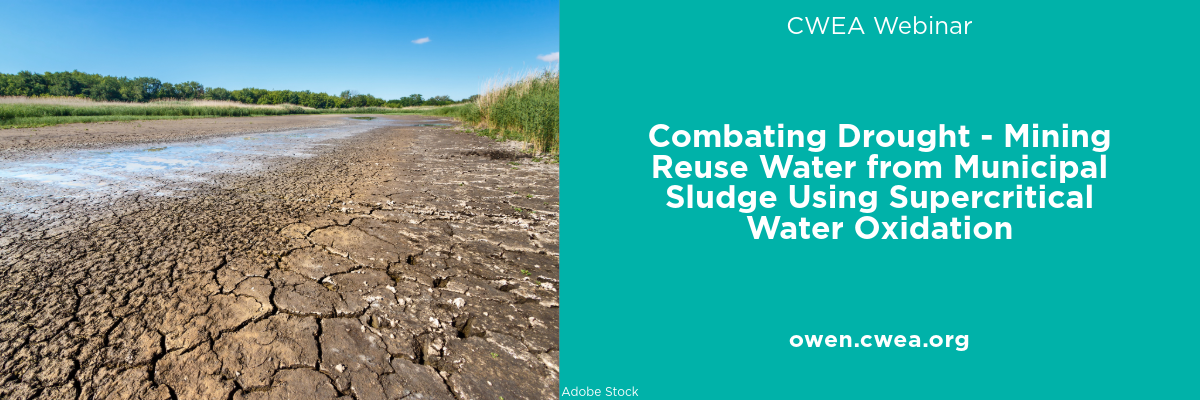|
Combating drought - mining reuse water from municipal sludge using supercritical water oxidation - Live Webinar
June 25, 2024
Contact Hours:
1.2
Description:

Member fee: $25.00
Non-Member fee: $35.00
1.2 Contact Hours towards CWEA Certifications: TBD
Reuse water used for irrigation and aquifer recharging is especially beneficial in arid and semi-arid regions, but also in general to reduce dependency on other natural resources. In addition, reuse plays an important role in building sustainability and resilience in design and construction. Often overlooked aspect of recovery in municipal wastewater is water from sludge, which typically contains between 75 to 95% moisture.
A private real estate investment firm in Texas is developing a reclaimed industrial site in Houston with a vision of creating a circular and sustainable waste management opportunity within the new development. The goal is to transform wastewater, food waste, and other recyclable wet organic wastes into recoverable and reusable clean water, energy, and nutrients. The technologies being considered for this approach include membrane bioreactor, supercritical water oxidation and ultraviolet light disinfectant.
The combination of these technologies’ makeup the treatment scheme for this decentralized water reuse facility, which is being developed in partnership with 374Water, a global social impact, cleantech company that provides unique decentralized water resource recovery facilities. The challenge with a fixed treatment asset is maintaining consistency of wastewater feed. In other words, would the development produce the same or similar volume of waste, with uniform constituents, on a daily basis.
One way to overcome this challenge and to maximize the beneficial use of the investment, the facility will employ sewer mining, a process where municipal wastewater from the pipeline, with consent from the City, will be drawn and used as a supplement waste to offset variation in waste generated from the development on a daily basis. Simply put, in order to stabilize the flow and feed characteristics of the waste to be treated, wastewater from the sewer will be drawn at a rate that brings the overall waste to the average treatability volume and quality for each of the technologies being employed. This webinar will cover the role of SCWO to transform waste inputs into usable byproducts.
|
Sessions information is not available at this time.
|
|
|
Speaker information is not available at this time.
|
|
|
|